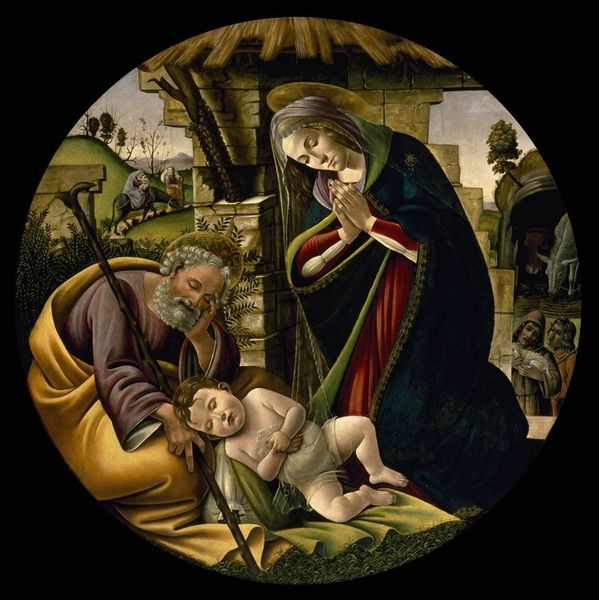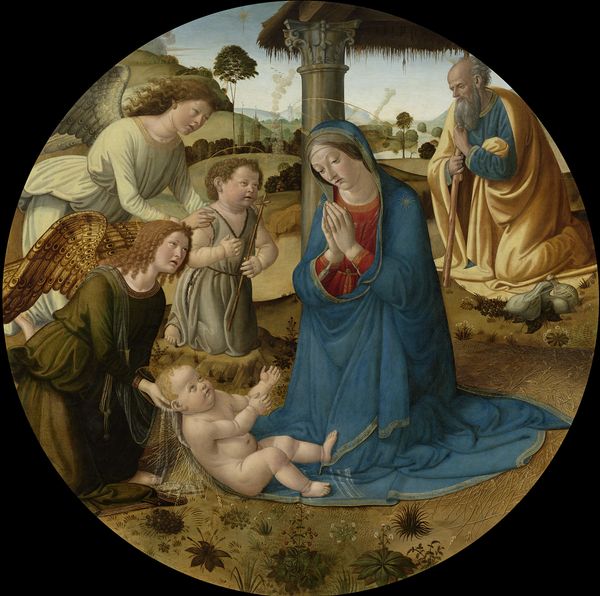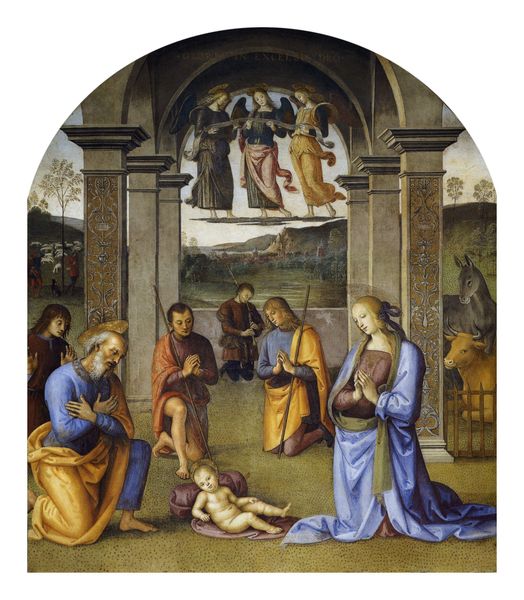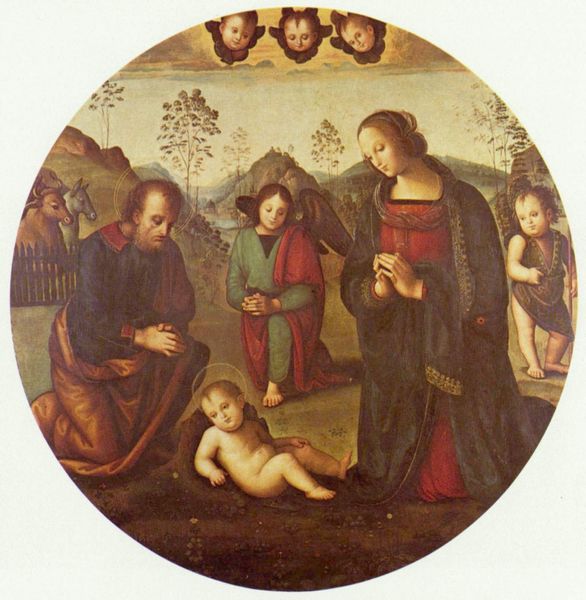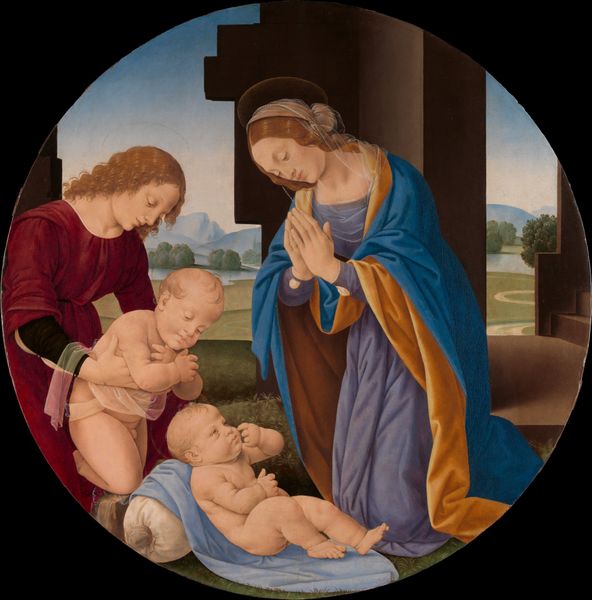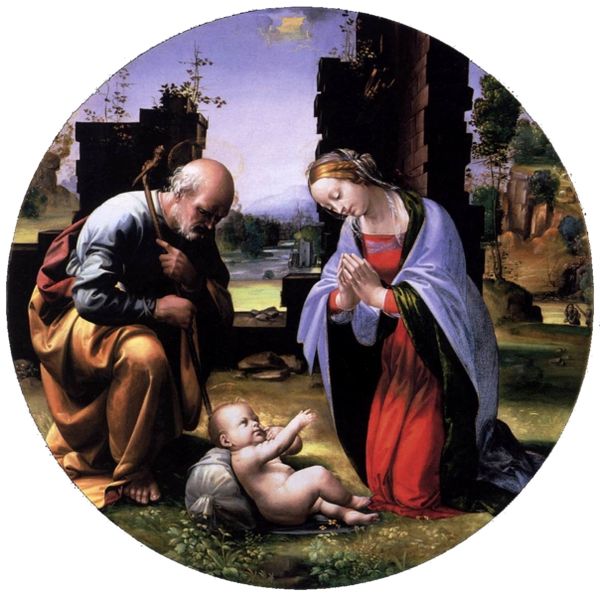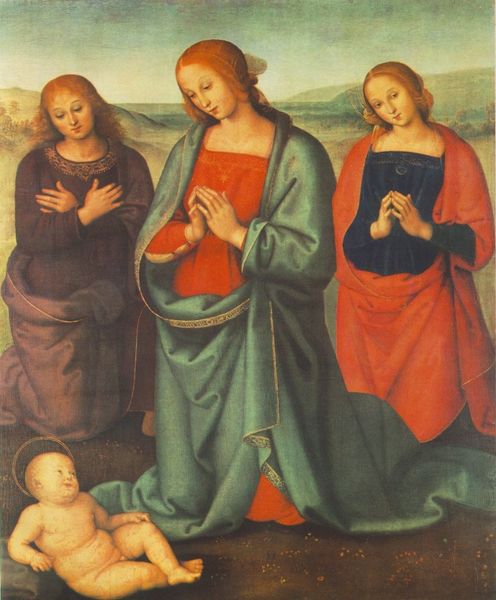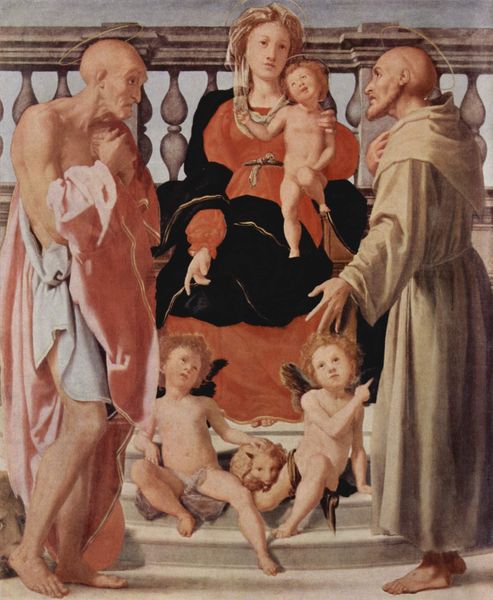
painting, oil-paint, fresco
#
narrative-art
#
painting
#
oil-paint
#
figuration
#
fresco
#
oil painting
#
framed image
#
genre-painting
#
history-painting
#
italian-renaissance
Dimensions: diameter 88 cm, thickness 3.3 cm, depth 10.1 cm
Copyright: Rijks Museum: Open Domain
Editor: So, this roundel painting, "Worshipping the Christ Child" by Meester Allegro, created sometime between 1480 and 1515 using oil and possibly fresco, feels… unbalanced. St. Joseph seems disconnected, almost melancholy. What draws your eye, Professor? Curator: It is interesting that you note the imbalance, as it seems the artist uses it to his advantage to point towards the key components of the painting. Let us analyze the arrangement of the figures, beginning with Joseph, relegated to the left. His somber disposition, contrasted with the lively interaction between Mary, the Christ Child, and John the Baptist, emphasizes the painting's central theme: the divinity and worship of Christ. Do you notice the subtle lines directing our gaze? Editor: You mean how their gazes converge? Mary’s focused downward, and even John seems reverent, creating a sort of triangular visual path leading to the Christ Child. But St. Joseph…he breaks that pattern, doesn’t he? Curator: Precisely. This disruption is intentional, it functions almost as a counterpoint. His exclusion underscores the miraculous nature of the event, setting up a system of visual differences. How does the color palette strike you? Editor: It seems rather muted. The predominance of earthy tones – browns, ochres, muted reds – feels grounded, despite the heavenly subject. Curator: Agreed. The artist utilizes a restrained palette to convey a sense of piety and humility, befitting the scene's spiritual significance, yet there is also an intensity there if one looks close enough at the painting. Considering these elements, where might we place this work within the broader context of Renaissance art? Editor: I see now. It’s not just a depiction of the Nativity, but a careful construction of theological ideas expressed through formal composition. Curator: Indeed. Analyzing these formal elements, reveals the painting's deeper meanings and illuminates the artist's skillful manipulation of visual language.
Comments
No comments
Be the first to comment and join the conversation on the ultimate creative platform.
